What to Expect for a Home Remodel or Addition in Austin, TX and Surrounding Areas

Thinking about upgrading your space? Whether you're planning a kitchen overhaul, a bathroom refresh, a backyard deck addition, or building a guest house, this guide breaks down everything you need to know. From average costs and timelines to material choices, labor rates, and permitting processes, we cover it all. Learn what to expect for different remodel types—including kitchens, bathrooms, decks, and ADUs—and get tips on budgeting smart and working with your architect. If you're remodeling in Austin, this is your go-to resource for informed planning and confident decision-making.
What to Expect for a Full Kitchen Remodel
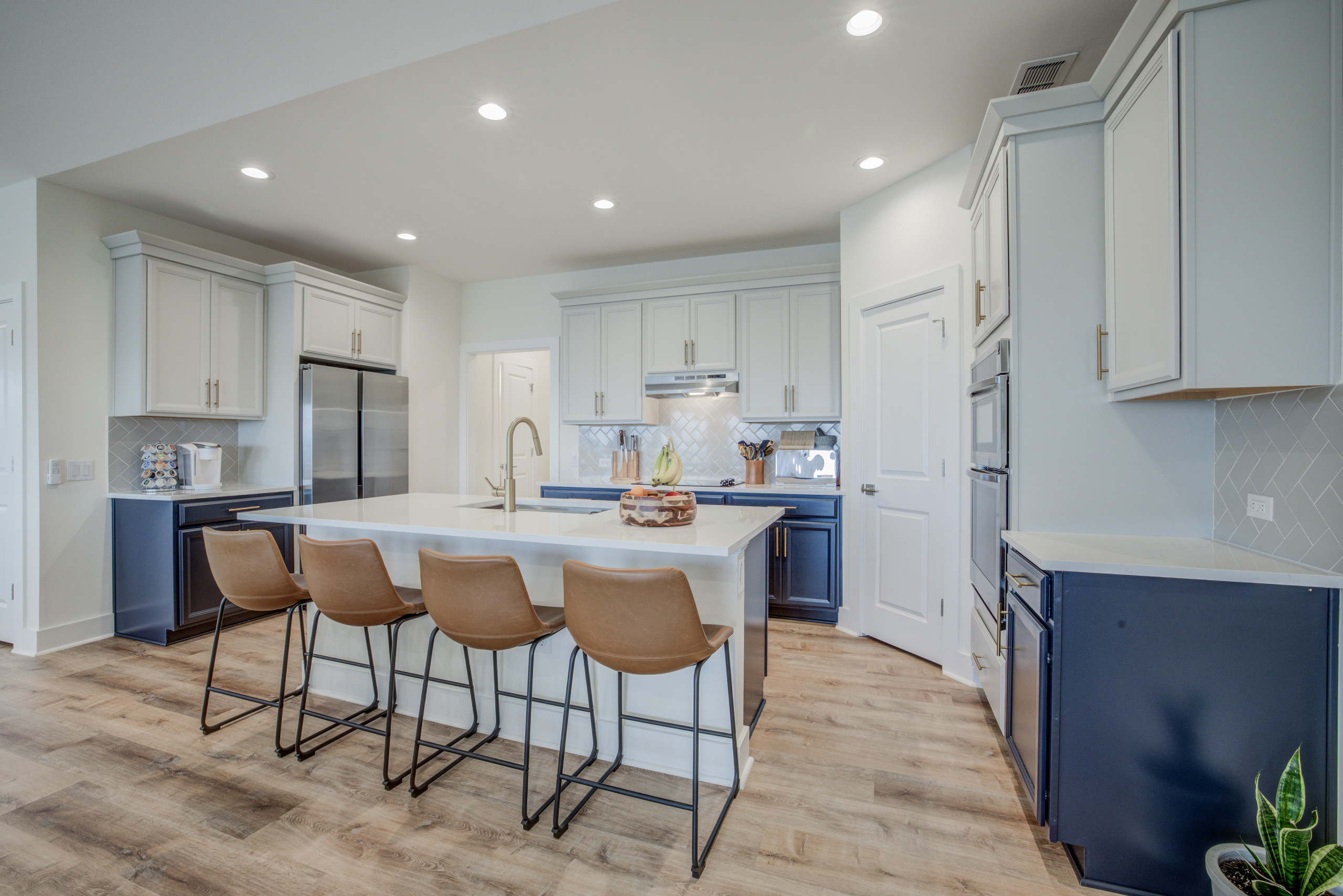
In Austin, TX, a typical kitchen remodel can range from around $20,000 to $65,000 or more, depending on the scope, materials, and level of customization.
Here's a more detailed breakdown:
- Basic Kitchen Remodel: Expect to pay around $30,000 to $60,000, with an average cost of $45,000.
- Mid-Range Kitchen Remodel: Costs can range from $60,000 to $120,000, with an average of $90,000.
- High-End Kitchen Remodel: These can start at $120,000 and go up to $250,000 or more, with an average of $185,000.
Factors Affecting Cost:
- Kitchen Size: Larger kitchens will naturally require more materials and labor, impacting the final price.
- Materials: The type of cabinets, countertops, flooring, and appliances you choose will significantly impact the cost.
- Customization: Custom cabinetry, unique finishes, and high-end appliances will increase the overall cost.
- Scope of Work: Whether you are simply updating the existing kitchen or doing a complete gut and remodel will affect the price.
- Timeframe: Kitchen remodels can take anywhere from 6 to 8 weeks for smaller renovations, but larger remodels can take up to five months, not including the planning stages.
What to Expect for a Primary Bathroom Remodel
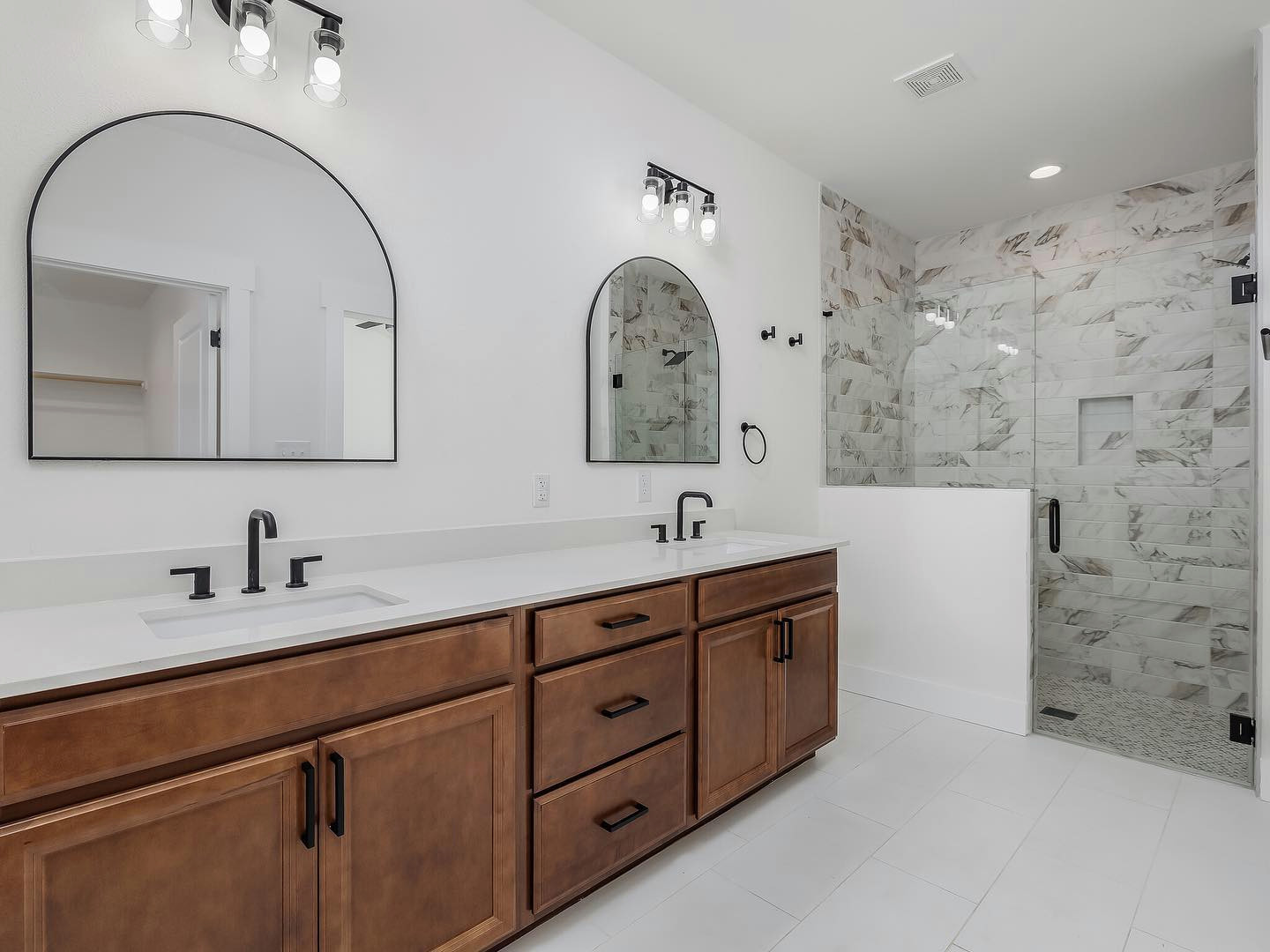
In Austin, TX, a master bathroom remodel typically costs between $20,000 and $40,000, but can range from $8,000 to $50,000 or more depending on the scope, materials, and labor costs.
Here's a more detailed breakdown:
Factors Affecting Cost:
Scope of Work:
- Partial Remodel: Replacing fixtures, updating flooring, or painting can cost $8,000 - $15,000.
- Full Remodel: Includes demolition, structural changes (like moving plumbing), and complete renovation, costing $15,000 - $35,000 or more.
Materials:
- Budget-Friendly: Laminate countertops, basic tile, and standard fixtures can keep costs down.
- Mid-Range: Granite countertops, higher-quality tile, and upgraded fixtures can increase the cost.
- High-End: Custom cabinetry, exotic tile, and luxury fixtures can significantly raise the price.
Labor Costs:
- Labor costs can vary depending on the experience and location of the contractor.
- General contractors in Austin typically charge $35 to $40 per hour.
Size of the Bathroom:
Larger bathrooms generally require more materials and labor, leading to higher costs.
Layout Changes:
Modifying the bathroom layout, such as adding a walk-in shower or a double vanity, can increase costs.
Permits:
Some projects, like structural changes, may require permits, which add to the overall cost.
Unforeseen Issues:
Hidden plumbing or electrical problems can arise during the remodel, potentially increasing costs.
Example Cost Breakdown:
- Demolition: $2,800
- Framing: $3,300
- Sound Insulation: $1,500
- Drywall: $2,500
- Tile Installation: $4,720
- Shower Pan Installation: $1,100
- Vanity, Toilet, Tub, Faucets, Lights Installation: $1,970
- Labor: $8,500 - $15,000+
- Materials: $6,500+
Tips for Budgeting:
- Create a Detailed Budget:
Outline all the costs associated with the project, including materials, labor, permits, and potential extras.
- Shop Around:
Get quotes from multiple contractors to compare prices and ensure you're getting a fair deal.
- Prioritize Needs:
Focus on the most important aspects of the remodel and consider making some compromises to stay within budget.
- Do Some DIY:
If you're comfortable with basic tasks, consider doing some of the work yourself to save on labor costs.
- Factor in Contingencies:
Set aside a contingency fund for unexpected issues that may arise during the remodel.
What to Expect for a Guest Bathroom Remodel
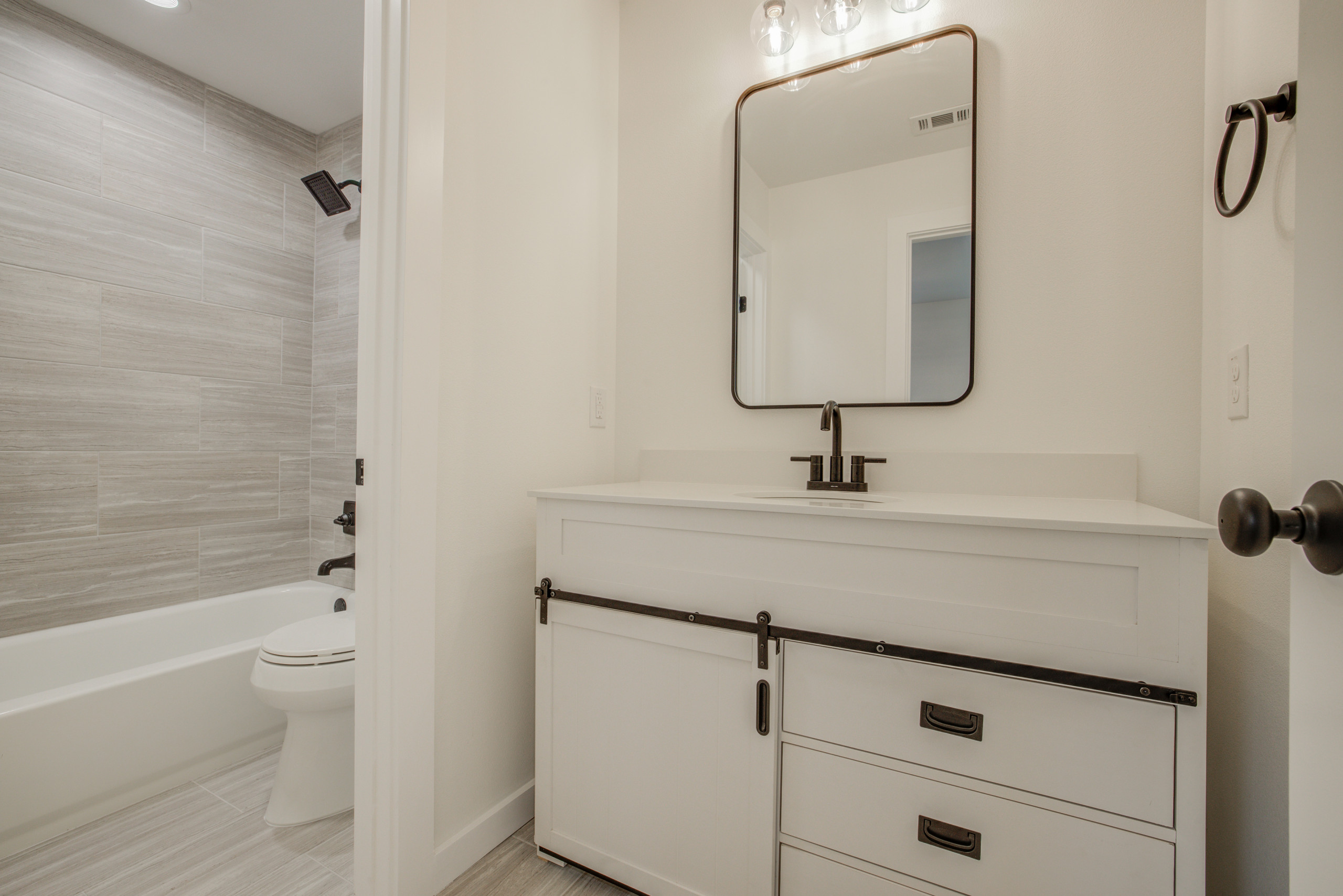
A typical guest bathroom remodel in Austin, TX can cost anywhere from $7,000 to $20,000, depending on the scope of the project and the materials used.
Here's a more detailed breakdown:
- Minor Remodel: A minor remodel, which might include new flooring, updated fixtures, and a fresh coat of paint, typically falls between $7,000 and $20,000.
- Mid-Range Remodel: A mid-range remodel, which might involve replacing the vanity, adding new lighting, installing a new bathtub or shower, and updating plumbing fixtures, usually falls between $15,000 and $25,000.
- Luxury Remodel: A high-end remodel that involves relocating plumbing, custom cabinetry, stone countertops, or luxury tile, can cost over $30,000.
- Small bathroom remodel: A small bathroom remodel can cost between $3,000 and $15,000.
- Half bathroom remodel: A half bathroom remodel can cost between $3,000 to $15,000.
- Full bathroom remodel: A full bathroom remodel can cost between $7,000 to $20,000.
- Master bathroom remodel: A master bathroom remodel can cost between $20,000 to $40,000.
- Accessibility-friendly bathroom remodel: An accessibility-friendly bathroom remodel can cost between $10,000 to $40,000.
What to Expect for a Backyard Deck Addition
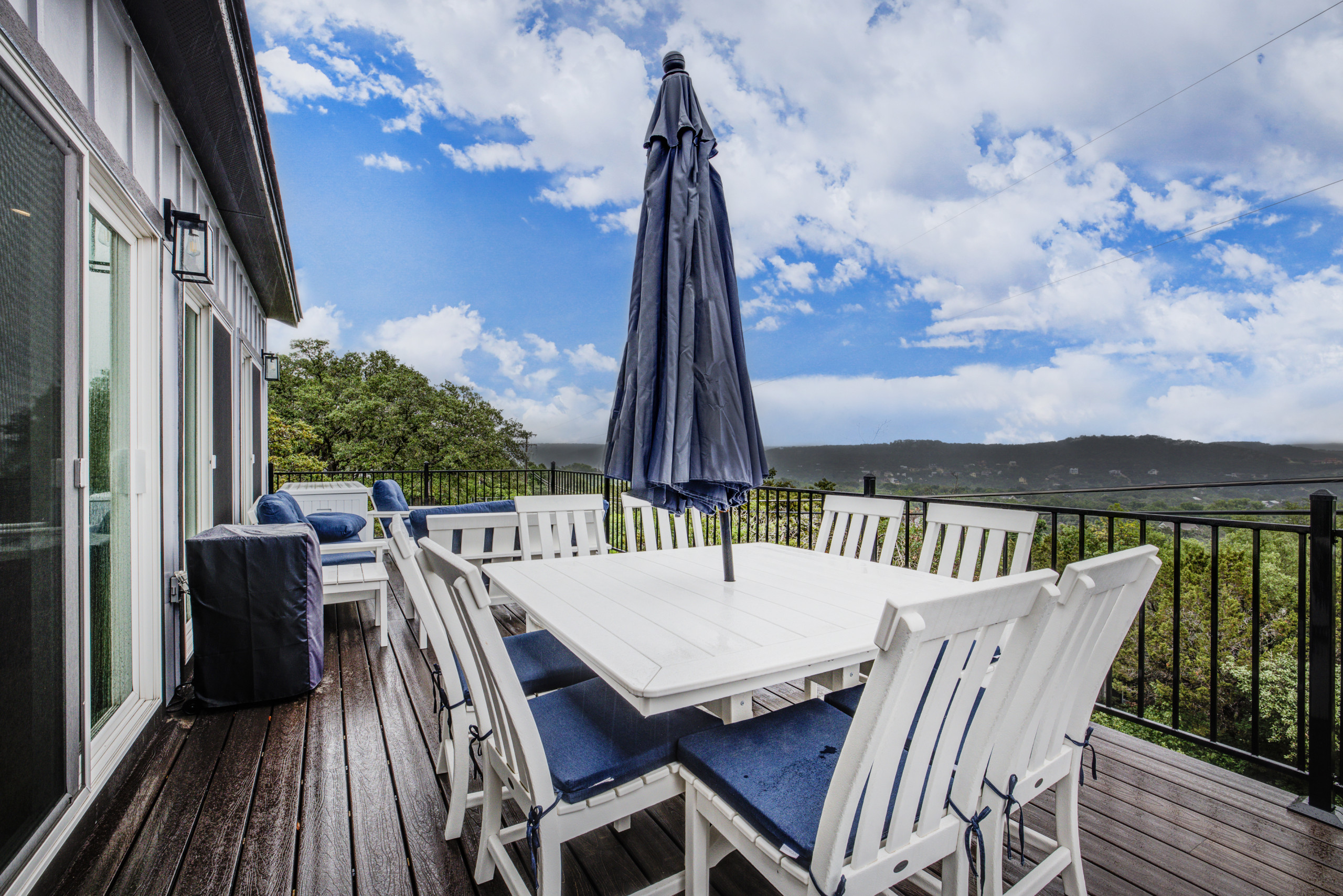
In Austin, TX, a typical deck addition can cost anywhere from $30 to $60 per square foot, including materials and labor. Smaller decks (100-200 sq ft) might cost $4,000-$8,000, while larger decks (500+ sq ft) can reach $20,000 or more.
Here's a more detailed breakdown:
Cost per Square Foot:
- The average cost to build a deck is $30 – $60 per square foot.
- This includes decking material, hardware, beams, balusters, and labor costs.
- Labor costs can account for half to seventy percent of the total expense.
Deck Size and Cost:
- Smaller decks (100-200 square feet): Ideal for modest outdoor spaces, costing $4,000–$8,000.
- Mid-sized decks (300-400 square feet): Perfect for entertaining, ranging from $10,000–$15,000.
- Large decks (500+ square feet): Multi-level or expansive decks can cost upwards of $20,000.
Material Costs:
- Wood: Popular choices like cedar, redwood, or pressure-treated lumber can help keep material prices in check.
- Exotic woods: Tigerwood, Ipe, redwood, and mahogany will increase costs to $50 per square foot or more.
- Composite decking: Costs $40 to $80 per square foot installed.
- Trex decking: Costs $45 to $70 per square foot installed.
- Aluminum decking: Costs $100 to $125 per square foot installed.
Factors Affecting Cost:
- Material Choice: Higher-end materials will increase costs.
- Deck Size: Larger decks will cost more.
- Railing Type: Adding railings will increase the cost. Glass, cable rail, or other high-end railings will be more expensive.
- Location: Prices may vary in different areas.
What to Expect for a Guest House or Accessory Dwelling Unit (ADU)
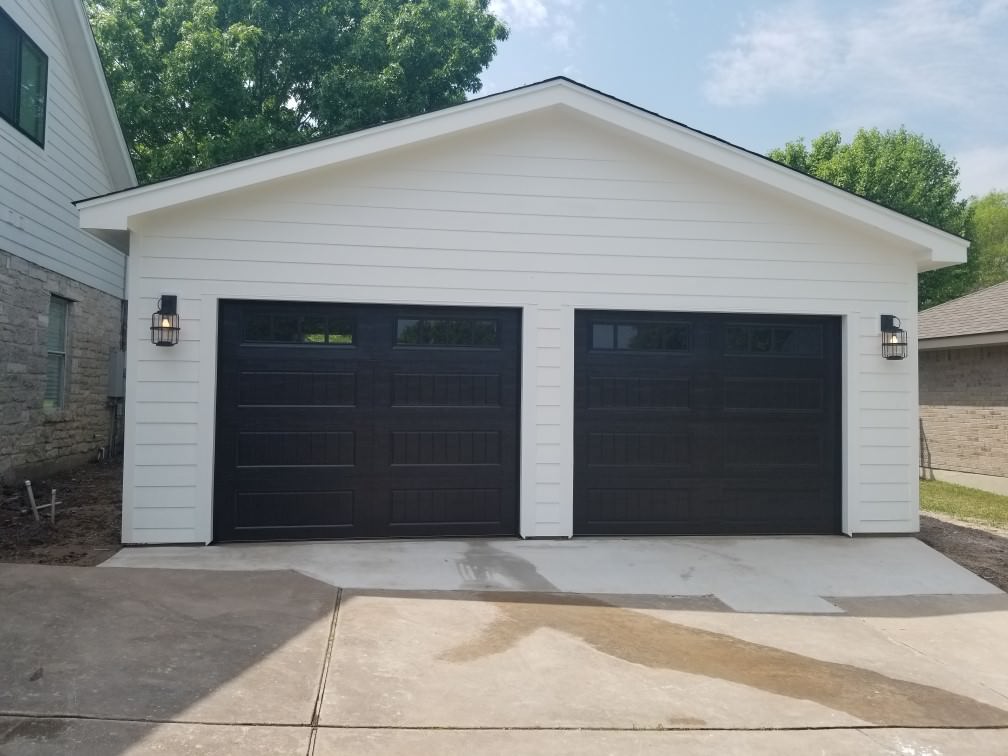
In Austin, TX, expect to pay $120,000 to $400,000 or more for an ADU, with costs ranging from $300 to $400 per square foot, depending on size, design, materials, and construction type. Key factors influencing the cost include size, materials, permits, site preparation, labor, utility connections, and finishes.
Here's a more detailed breakdown:
Cost Factors:
- Size and Design: Larger and more customized designs will naturally increase costs.
- Materials and Finishes: High-end materials and finishes will significantly increase the budget.
- Permitting and Fees: Obtaining necessary permits and paying associated fees are required and can add to the final cost.
- Site Preparation: This includes grading the land, removing trees, and addressing any drainage issues.
- Utility Connections: Connecting the ADU to utilities like water, sewer, and electricity can be a significant expense, especially if the ADU is far from existing lines.
- Detached vs. Attached: Detached ADUs are generally more expensive due to the need for a foundation and utility setup.
- Zoning Regulations: Local zoning regulations and potential infrastructure upgrades can impact the final budget.
Cost Estimates:
- Smaller ADUs (400–600 sq. ft.): $120,000 to $200,000
- Mid-sized ADUs (600–800 sq. ft.): $180,000 to $300,000
- Larger ADUs (800–1,100 sq. ft.): $240,000 to $400,000
- Above-garage ADU: $128,000 to $225,000
- Detached ADU: $120,000 to $400,000
To permit an ADU in Austin, you must first verify your property's zoning and lot size, then gather necessary documentation, submit a residential building permit application, and undergo a plan review process, ensuring compliance with Austin's Land Development Code.
Here's a more detailed breakdown of the process:
1. Verify Your Property and Eligibility:
- Check Zoning: Ensure your property is in a zone that allows ADUs, such as SF-1, SF-2, SF-3, SF-5, SF-6, or multifamily zones.
- Lot Size: Confirm your lot meets the minimum size requirement (typically 5,750 square feet).
- Address Verification: Verify the address for the ADU through the Address Management Services webpage.
2. Gather Required Information and Documentation:
- Application: Obtain the New Construction and Addition Building Permit Application from the Residential Plan Review webpage.
- Legal Description: Gather the legal description of the property from Travis Central Appraisal District (TCAD).
- Property Information: Include Lot #, Block, Phase, Section, Property ID (PID), and Extra-Territorial Jurisdiction (ETJ) name (if applicable).
- Construction Details: Provide the proposed construction start date, estimated cost of construction, and information on whether the home will use on-site sewage facilities.
- International Residential Code (IRC) Year: State the year of the IRC you will be using.
3. Submit the Application and Documentation:
- Online Submission: Submit the permit application and required documentation through the Residential Plan Review webpage.
- Residential Intake: Residential Intake staff will check the submission to verify all required documentation is provided.
4. Plan Review and Inspections:
Plan Review: The City of Austin will review your plans to ensure compliance with the Land Development Code.
- Inspections: You will need to schedule and pass required inspections throughout the construction process.
What to Expect When you Meet with your Architect

When meeting with an architect to design a home, expect to discuss your needs, preferences, budget, and lifestyle to create a plan that suits your vision, while also exploring design options and the architect's approach to the project.
Here's a more detailed breakdown of what to expect:
1. Initial Consultation & Understanding Your Needs:
- Get to Know You:
The architect will likely start by getting to know you and your family, understanding your lifestyle, daily routines, and how you envision using the space.
- Discuss Requirements:
Discuss your needs, preferences, and aspirations for the home, including desired features, amenities, and any specific requirements.
- Budget and Timeline:
Discuss your budget and timeline for the project, as these are crucial factors in the design process.
- Explore Design Styles:
Discuss your preferred architectural styles, and any design elements or ideas you have.
- Site Analysis:
The architect will likely want to understand the site, including its constraints and opportunities (e.g., sunlight, views, local regulations).
2. Exploring Design Options:
- Presenting Ideas:
The architect might present initial design concepts or sketches, or discuss different approaches to the project.
- Iterative Process:
Expect a collaborative and iterative process, where you provide feedback and the architect refines the design based on your input.
- Visualizations:
The architect might use drawings, models, or other visuals to help you visualize the design.
- Functionality and Aesthetics:
Discuss the balance between functionality and aesthetics, ensuring the design meets your needs and preferences.
3. Understanding the Architect's Approach:
- Design Philosophy: Ask about the architect's design philosophy and approach to projects.
- Experience: Inquire about their experience with similar projects and their track record.
- Communication Style: Discuss their communication style and how they plan to keep you informed throughout the process.
- Fee Structure: Understand their fee structure and how it works.
- Contract: Discuss the scope of work, timeline, and payment schedule.
4. Preparing for the Meeting:
- Gather Ideas: Collect any photos, sketches, or examples of designs you like.
- Define Your Needs: Clearly outline your needs and preferences for the home.
- Set a Budget: Have a clear budget in mind and discuss it with the architect.
- Ask Questions: Prepare a list of questions to ask the architect.
- Be Open to Suggestions: Be open to the architect's suggestions and ideas.
